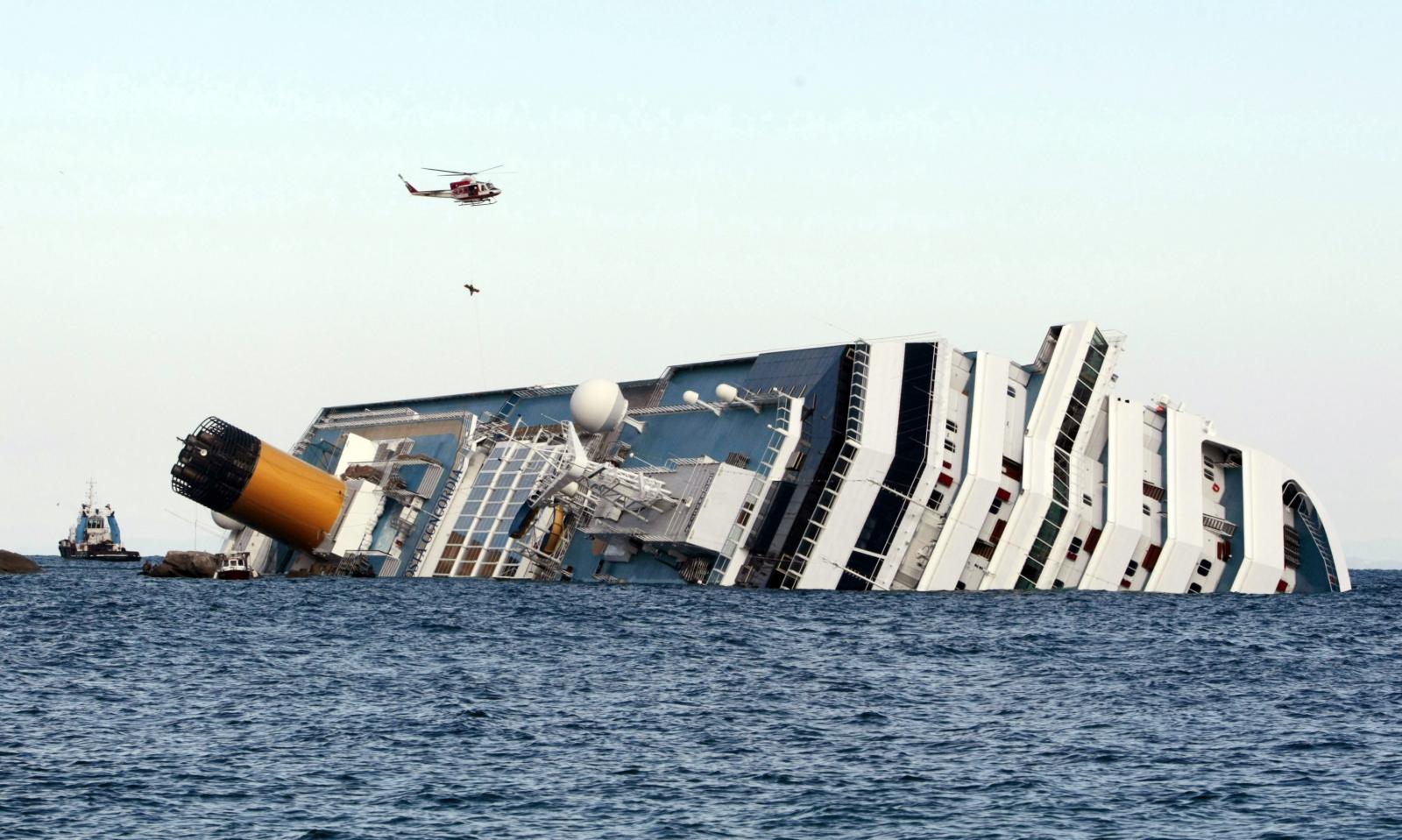[l]A letter to Micky Arison, CEO of Carnival Cruiselines, and Gianni Onorato, president of Costa Cruises[/l]
Dear Micky Arison,
I was sorry to hear about the Costa Concordia. What a big fuck-up, a große Verhau, as Kluge would put it. A sad one to boot.

I saw that you tweeted that “our thoughts and prayers are with the passengers and crew” so I can tell that you’ve been thinking about it a lot.
The concern in the media has been, above all, with those passengers and crew living, dead, and unconfirmed, as it well should be. It seems a fair coverage, although I wish the Brits would stop gendering the wrecked boat: as a BBC correspondent put it, “because although she sits behind me looking fairly solid there, she’s not quite as stable as she looks. She’s sitting on a ledge and if she was to move not too far, there’s a danger that she could slide into very much deeper water. The authorities just couldn’t take the risk of having divers and other rescue workers on board if she was just that unstable.” The sad fact of a scuttled behemoth capsized just offshore, guts bursting with marine-life-killing fuel, may have certain elements that are funny. But it is not hysterical, at least in the sense of a late Victorian misogynist pathology.I wish also that the horror of the situation could be described without the now-ubiquitous reference to it being “just like in Titanic” or “a disaster movie.” I wish this only because the first is a disastrous, vile little flick whose name should not be spoken and because the second hints at something worse. I’m not speaking of the aptness of a Roland Emmerich film in giving us a visible manifestation of what it feels like to witness everything go to lurching, creaking hell. For The Day After Tomorrow certainly does that, albeit for unintended reasons. And however precarious our lives, we tend to envision an even keel that only rocks or runs rocky in the cinematheque and only for a prescribed duration.
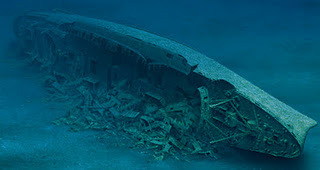
Rather, what disturbs me, as I’m sure it disturbs you, is what this says about the brevity of our memory: After all, the Andrea Doria — that most Italo of Titanics — floundered and lolled onto its busted ribs a mere 55 years ago, and frankly, not as much has changed as we might like. It has since become the “Mount Everest of scuba divers,” and it has been well and truly stripped by those reverse mountaineers, but 50 meters of water weighs less than the distracted fog that curses our memory.
I’m sure, though, that your memory has been leading you to think of Italian communist Amadeo Bordiga a lot recently, as mine has, because of what he wrote about the Andrea Doria. For one of Bordiga’s points is that a ship, much like a plagued city, is a space which is materially organized, structured, and reinforced around divisions of rich and poor, white and brown, men and women, consumer and producer, of value and worthlessness. And yet, in a moment of catastrophe, when the sea turns the hallways vertical and there are no elevators, those encrusted divisions are rendered null and void, except as quite literal barriers to escape or life: A luxury suite becomes barricaded by water, a modern glass table becomes an aquatic guillotine, insisted-upon private quarters become little jail cells inside a broken bathysphere. And so, as Bordiga puts it: “It was the same story with the rehabilitation of the great cities, from which, as Marx and Engels stated from the time of the gutter of Paris, Haussmann, the poor had and will have everything to lose and nothing to gain. The upper bourgeoisie was told by clever technicians and speculators that epidemics do not know class divisions, even in a rich man’s house one can die of cholera. So get on with it, Demolition Joe! So now when the ship goes down, so too do the first-class passengers, half clad like the poor devils, hardly togged up in their dinner jackets.”
That is, when the ship sinks, one has a single choice: flee like rats or die like rats.
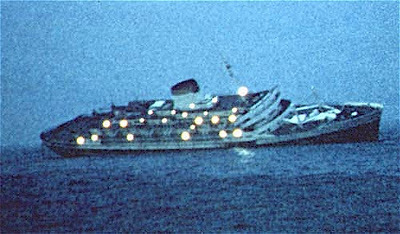
Of course, the questions follow, spelled out in headlines:
“How Could This Happen to a Modern Ship?”
“Have Cruise Ships Gotten Too Big?”
The proposed answer to the first question seems to be “human error,” as the captain is accused of having fled like a rat, and, worse, of having “buzzed the island” à la Top Gun. (It has been a bad week in the war of meat and machine, given that, having ruled out sabotage, the 2010 crash of an Ethiopian plane in Lebanon was just declared as the pilot’s fault.) As the official Costa line goes, the route was programmed, and he made an unauthorized error. That is, he deviated from the correct line: He tried to be human at a time when such was ill-advised. The charts were right, and it was just bad behavior that ruined the good times for everyone.
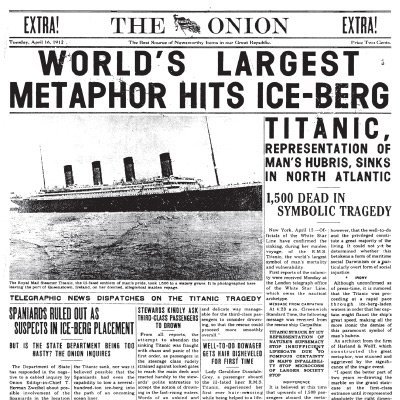
The answer to the second question — have cruise ships gotten too big? — seems doomed to be “Nah, not really.” Because the fact remains that these were the exact same questions posed 56 years ago — the same debates, the same excuses. But firing a knife thrower doesn’t change the fact that knives are made, en masse, and that when thrown away, when made obsolete, they still stick around. They wait, sharpening themselves in the attic. They come back because they may be broken or dulled individually but not the figure, the blueprint, the ideal, which keeps its edge and impels cancerous replication in its own image and with all the form-giving fire of industry. They get themselves made and remade. A cunning of reason applies to the construction of manslaughterous vessels: However gutted they may get, however wide a hole gapes their side or ruins their image, they will not pay the penalty of the universal. That will be paid by humans alone: Those who drown and those who are said to have drowned them.
We might consider making things that can’t sink. One good way to do this is to not build boats. But there are landslides, and many houses are placed along the sea. Once you open the door to non-sinkability, it’s hard to know where you reasonably stop. Or perhaps a boat made of water, but that seems far off. And certainly not ice, because much like fire, you can fight ice with ice, and certainly with rocks.
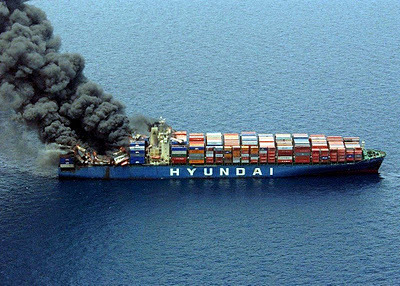
So maybe it’s better to recognize that accidents happen. Besides, it’s not as though the history of nautical movement has been predicated on the steady erasure of accidents. In his big study of the Mediterranean world of the 16th century, “microhistorian” Fernand Braudel looks at the way in which the stormy winter seas had long provided an obstacle to year-round shipping and, therefore, year-round profit. There were, of course, developments in shipping technology — more stable craft, faster craft — but the most significant technology had nothing to do with the shape of a hull or the loading of its ballast. It had to do with the rise of accident insurance, such that it became worthwhile for merchants to send their products, and sailors, off to sea even when there was a distinct chance they would go down. And go down they did. Wreckage did not become less frequent, just better remunerated. For those who do not go down to the sea in ships. That is, for those who stay on land and take risks of a more pecuniary variety.
The Costa Concordia was hardly braving dangerous waters (indeed, even now it leans toward the just-out-of-reach coastline, as if pulled by a gravity that exists between things so large they desire to be mountains, not creaking vacation monoliths), but the point here — Bordiga’s point, in a way — goes further. It isn’t just that accidents happen and that the men of order who profit off disorder will learn to turn a profit all the same. It’s that they have to happen. Ruination and obsolescence isn’t a by-product of capital: Insofar as its project consists of the transformation of material practice and objects (that is, of human labor across time and of things worked on by that labor) into vessels of exchangeability, it must renew this process. There is no other way. It has to build more, not because we need more buildings, but because those buildings are necessary as crystallized ciphers of exchange. And it must wreck them. Sure, a catastrophe, a plague, a swarm threatens to wreck also the divisions that structure cities, but that is not an exception. It is part and parcel of the transit of forced obsolescence and indifferent waste-laying.
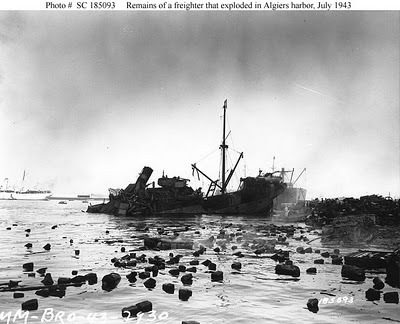
It’s always hard to reconcile this as no one, not even the most nefarious mustache-twirlers, “wants” something like this to happen. Even with our little lapses, we generally intend the best. We reason, calculate, tabulate. We conspire. We watch our backs, and we sometimes have the backs of others. And yet we stagger forward across seas on which oil from a busted well below is burned. We build reactors, and they are upset when we barricade the railroads that carry away their waste. We make dolls that chew the scalps of little girls. We bury waste in a too-shallow grave and now you can’t eat the cheese. We throw away pairs of shoes and books, and we make more of them, and we don’t burn the ones that should be burned. We starve or are starved. We are surprised that rocks exist.
This brings us back to your specific unstable object, pivoting on its wound in the shallows. The ship surely can’t be used again. I doubt very much it will be patched up, retrofitted, and recarpeted for its triumphant return. After all, cruise ships are already obsolescent. That is the pleasure of them: One gets to feel like one is in the first part of Titanic, and one never thinks that one may end up in the latter half. Or you feel like you are on The Love Boat, only with the promise that you can, indeed, get off the Pacific Princess at some point rather than the eternal recurrence of 12,948 minutes of naughty misadventures, unsurprising guest appearances, and unlimited buffet acess. And so, in their warmed-over obsolescence, one must tread lightly, I’m sure, and the last thing the industry needs is to be haunted by the specter of human error on its lumbering steed called MOMENTUM AND TONNAGE. So it can’t be salvaged, at least in the public eye.
Perhaps it will be sent to be scrapped in Bangladesh? That would be a real shame, though. To be sure, it might recoup some of the losses, ones that I am sure weigh heavy on you given that the high season of cruise booking is from January to March, such that this one unfortunate incident will cast dusk’s pallor over the whole year’s fantasy of cruising in general. But we cannot patch up history, soldering new slabs of metal over a hole and slapping a fresh coat of paint, not to mention a new name, on what has showed itself a tool of manslaughter. And we cannot wipe it away, even if that wiping involves industrial-strength solvents applied by boys in south Asia.
As such, I write you less with a request than with an opportunity. I propose that you hand the wreck over to us to become the first-ever Museum of Salvage and Catastrophe (MOSAC). In so doing, we will christen the ship with a new name: IL SALVATAGGIO SELVAGGIO.
I’m sure the word museum gives you a bit of trepidation. After all, museums will be among the first to go in the insurrection: less because of the much-bemoaned separation of art and life than because they frequently include large indoor spaces with nice leather benches and surprisingly high-quality bathrooms. Some may get excited about blowing off a little class-war steam, and I imagine some pieces by Jeff Koons or Mark Rothko may end up worse for the wear. Yet a hostility toward museums is as relevant as a belief in their great importance: that is, rather silly.
Still, like the cinema used to be, they are on rare occasions a space to meet, talk, remember how wildly perverse Catholic ideology was and is, and learn to critique, if only through mockery. And for the most part, we get that what matters is the relation we have to things in the process of willfully ruining the relations of value and separation. It may just turn out that the proper relation, one that saves by scrapping the value still glomming on to the thing itself, will be that most derided of categories: the pretty, because the insistence on the pretty implies the devastation of the beautiful and its transindividual (in the bad way, in the sense of the commensurability of viewers) claims of being valuable. That is, the claim to have worth. Such that the most revolutionary attitude to most art, and to the spaces that crowd around them like so many post-austerity curvy Fortresses of Solitude, might be to say: It is damn pretty, but do we really need all the guards?
Our museum may be a little pretty too, if we play our cards right. What will we do in it?What will it look like? That depends in part on you, on whether you want to abandon it to us where it lies or whether you insist on removing it from the spot of its fresher scar. However, we can clarify one aspect of it: We can assure you it will maintain the theme of the oceanic and the disastrous. More than that, we plan to honor the ship by clarifying the specificity of its disaster and how that disaster clarified the obscure specificity of the ship. For the disaster, after all, was not that some died. Some may call that a tragedy or a shame, but it is not the specificity of this encounter.
The disaster was that it turned on its side. That it remained in the ocean but that it was no longer a boat. It became something else. A tomb, a trap. A series of pools, of caves.
When you watch the footage of the rescue, even if those filming don’t know how to really capture the aquatic uncanny and the shock to vision they are recording, you cannot but see the spaces transformed. Above all by the fact that they have a new “floor,” a new angle,” their ceilings now their right walls. The line where the wallpaper met the paneling now tracks an arrow up to the ceiling. The swimming pool, with its retractable glass covering, now opens onto the sea; its ceiling first made a wall, then shattered by the urge of chlorine to become brackish, and it spills out. Doors become tunnels down, like flooded mines, or rectangular oculi through which to swim up.
In other words, the disaster is that it ceased to be a boat without having first been evacuated, discarded, cleared, cleaned, emptied of fuel, and scrapped of value. And now, finally, one can swim through a ship.
We believe that the core operation of salvage, however obscure, doesn't have to do with scraping the last bits of value from the busted. It's about recognizing how that busting alone brings to light the specificity of a thing, the partial logic embedded in its whole, the buried holes, contours, properties, contradictions. Believing this, we see in the sinking of the Costa the visibility of what it deserved to be all along.
As such, we propose a few options for your consideration.
- We drag it to shore and make of it free housing, criss-crossed inside by ladders, burrowing out new passages. It will, after all, have an oceanfront view. Its fuel will be parceled out over centuries, used only to feed the funeral pyres of the residents when they die and are sent out to sea on iron planks of Concordia.
- We hack it apart to make sturdier rafts for those who risk their lives crossing the Mediterranean from Africa to try and find the means to live in Europe. The fuel is used to feed the motors that allow them to pass quickly through a sea without insurance or passports.
- We drag the scuttled mass north, far north where it is colder. We cut further passages through its rooms. The water freezes. We skate through it, ice-dancing in a banal ballroom flopped on its side. We warm our hands around the enormous fuel-stoked fire that burns on the adjacent ice: the Flame of the Unknown Mutineer, which never goes out, in honor of all the unremembered who challenged commerce and empire on the seas.
- Or perhaps, we go ahead and plug up that hole, carefully patch it with tons of metal, smooth it out, make it water-tight. We go ahead and scrap the inside of it, clean it up real right. And plant the whole thing upright, stern shoved deep, bow aiming toward the sun, in the ever-spreading Sahara and make of it a giant water tower. That fuel will be used to do all that fuel can do when it is taken from the leisure machines of the rich and given to those who need it: to power, to cook, to light, to weld, to fight, to heat the desert at night.
I wrote once, in a rather grand mood, that contrary to what the banners say, another world is impossible. And I also wrote that it is necessary, but only built from the gutted hull of this one.
What a fitting destiny for the Costa Concordia, having impaled itself on the sea, to open out its hull, halls, engines, kitchens, toilets, glass, pools, brass, and halogen to a different traffic. If a boat gets a funeral, let it be a funeral among eaters of the dead, a burial in the desert to become a brief, restricted, ridiculous, sad, and — thankfully —inadequate oasis in these years of simultaneous flood and drought.
Sincerely,
Evan Calder Williams
